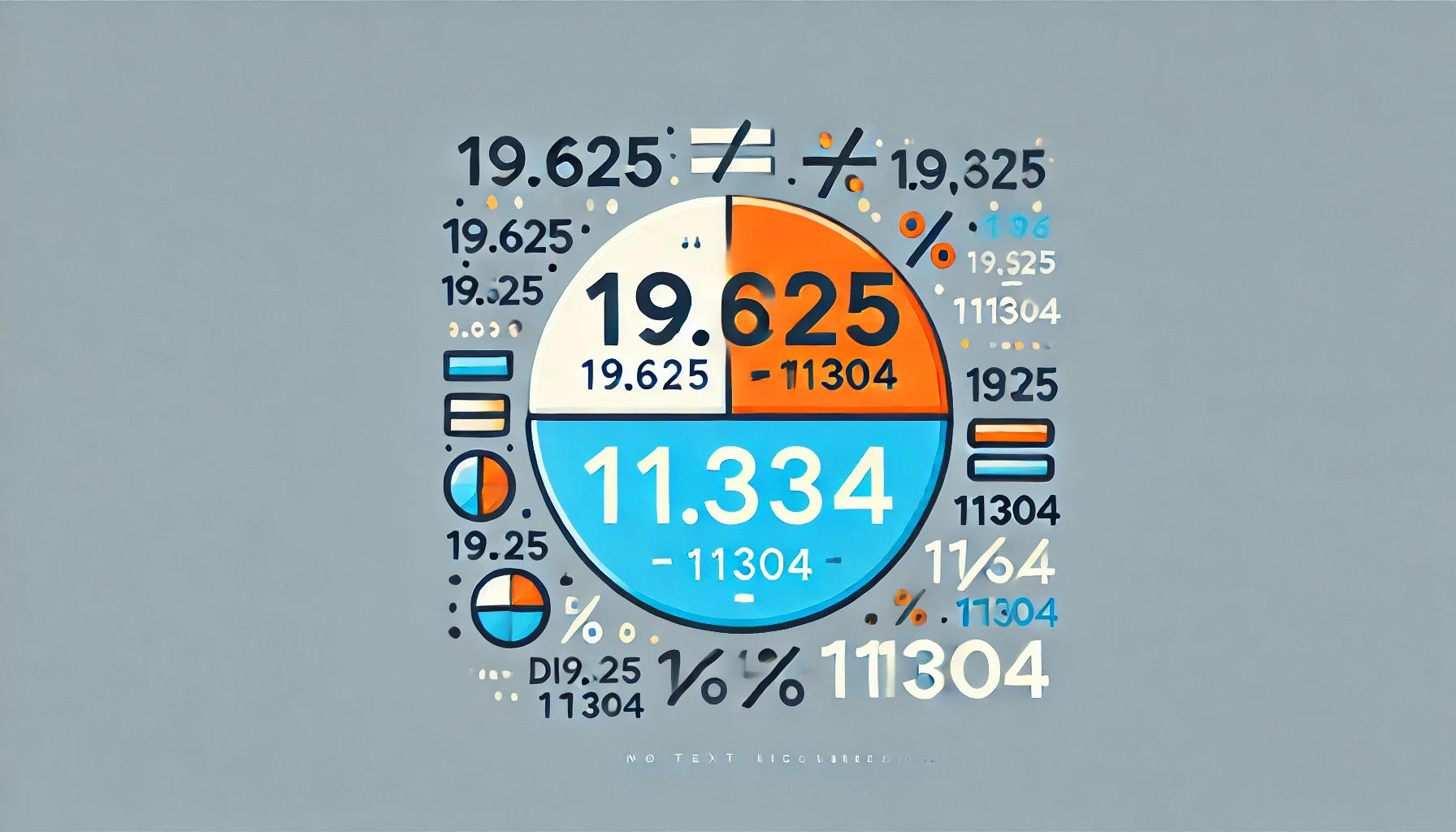Ever wondered what happens when you divide 19.625 by 11304? At first glance, it might look like an intimidating mathematical problem, but don’t worry! We’re here to simplify it. Whether you’re curious about the math behind it or just enjoy learning quirky facts, this blog will take you through everything you need to know.
Grab a cup of coffee (or a calculator), and let’s break it down together!
What is 19.625 Divided by 11304?
Before we jump into the solution, let’s talk about what division is—without the scary math jargon! Division is simply the act of splitting something into equal parts. Think of it as sharing a pizza among your friends. The number you start with is the whole pizza (19.625), and the number of friends is the divisor (11304). The result is how much pizza each friend gets (spoiler alert: it’s a tiny slice).
When you actually crunch the numbers, 19.625/11304 = 0.001736 (rounded). That’s a small number! But don’t let that tiny decimal fool you—small numbers like this have important applications, which we’ll discuss later. For now, remember: 0.001736 is the magic number.
How to Calculate 19.625/11304: Step-by-Step
Breaking It Down
Let’s walk through this calculation step by step. If you’re working this out by hand (respect!), here’s the process:
- Place the numbers in the division format:
- 19.625 ÷ 11304
- Long division or calculator:
- If you use long division, it’ll take a while, but a calculator makes this a breeze! Punch the numbers in, and voila, you get 0.001736.
Why Precision Matters
Now, why does it matter if the result is 0.001736 or something close? In some scenarios, small differences can lead to big changes. Think about banking or scientific research—being off by just a tiny decimal can have serious consequences!
Where Might You Encounter Such a Division in Real Life?
It may seem like a random calculation, but dividing small numbers like this comes up in various fields. For example:
- Finance: Calculating interest rates or stock prices often requires dealing with tiny decimals.
- Science: Precise measurements, like those in physics or chemistry, frequently involve numbers with many decimal places.
- Statistics: Data analysis often boils down to calculations with seemingly insignificant numbers that impact big decisions.
A result like 0.001736 might seem too small to matter, but in reality, such numbers are common. In statistics or engineering, small differences can make or break projects!
Simplifying the Concept of 19.625/11304 for Easier Understanding
Let’s simplify this further with a fun metaphor. Imagine you’re splitting a very small pie into 11304 pieces. You’ll get an extremely small slice—so small it’s more like a crumb (0.001736 of the pie). Although tiny, it’s still measurable.
If 0.001736 feels too abstract, think about it as less than 1% of something. In fact, it’s 0.1736%. In terms of money, it would be like getting less than two pennies from a dollar.
Common Mistakes When Performing Such Divisions
It’s easy to make mistakes when dividing numbers, especially decimals. One common error is misplacing the decimal point. A wrong decimal point could turn 0.001736 into 17.36, which is way off!
In cases like 19.625/11304, placing the decimal in the correct spot is vital. A miscalculation could lead to significant financial, scientific, or mathematical consequences. Always double-check!
The Importance of Small Numbers in Everyday Life
How Small Numbers Like 0.001736 Affect Our World
Though it might seem trivial, small numbers like 0.001736 are surprisingly common in everyday life:
- Interest Rates: Even a slight difference in interest rates can mean the difference between paying a little more or less on loans.
- Currency Conversions: Travel often means dealing with currency exchanges, where decimals are key!
Scaling and Converting Small Decimals
Want to make 0.001736 more relatable? Convert it to a percentage:
0.001736 × 100 = 0.1736%.
This is an easier way to understand the division and can be useful when comparing percentages in real life.
Tools to Help with Division Calculations
Using Calculators and Software
Let’s be honest, most of us don’t want to calculate 19.625/11304 by hand. Luckily, plenty of tools are available to help:
- Calculators: Whether it’s the one on your phone or a dedicated calculator, they’re essential for quick, accurate results.
- Online Tools: Websites and apps like Google’s calculator make it even easier to handle such divisions.
Manual Calculation vs. Technology
Although technology is convenient, it’s still important to understand basic math. Knowing how division works helps you spot errors, whether you’re balancing a budget or working on a science project.
Final Thoughts: Simplifying Math for Better Understanding
In this post, we’ve broken down the seemingly complex division of 19.625 by 11304 into something simple and manageable. Whether you’re interested in the math itself or the real-world applications, we hope you leave with a greater appreciation of small numbers.
Math is everywhere, and understanding it—even at the decimal level—can help you in daily life. So next time you encounter a division problem like 19.625/11304, you’ll know it’s no big deal!
Conclusion: Why Simple Divisions Matter in Everyday Life
In conclusion, division problems like 19.625/11304 might seem like abstract math at first, but they play a crucial role in real life. Whether you’re dealing with finances, measurements, or just curious about math, understanding the process behind such calculations can empower you to tackle more complex problems with ease. Keep calculating, and remember—small numbers can have big impacts!





